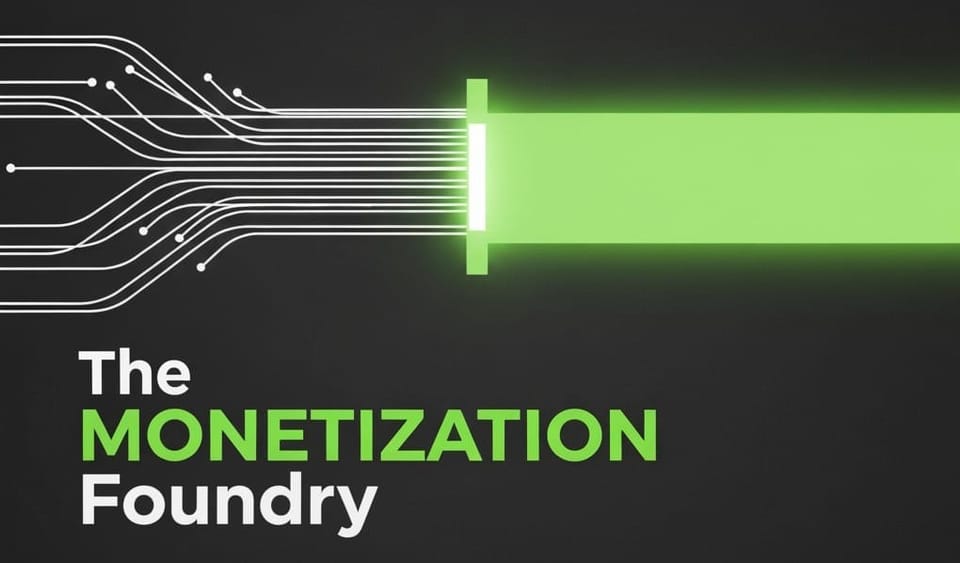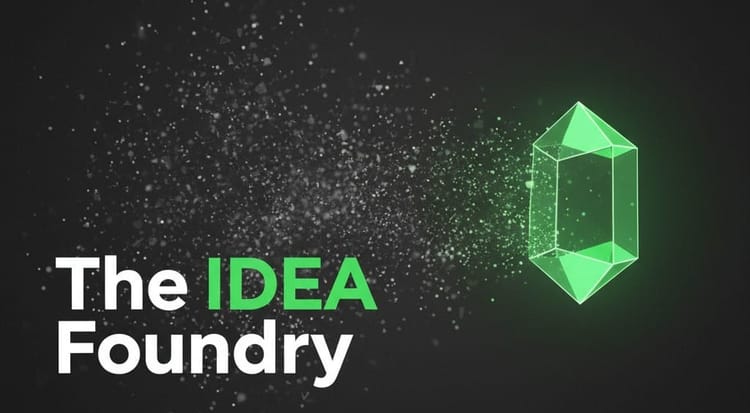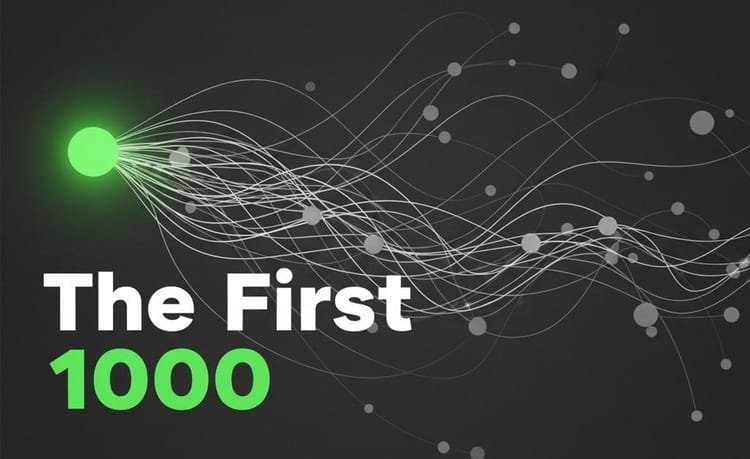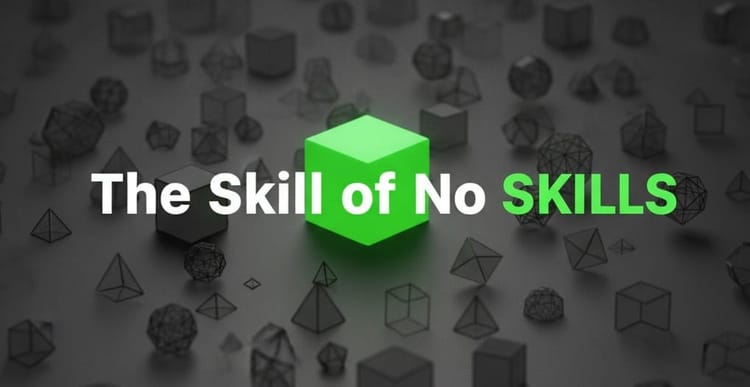The Monetization Foundry: Four Models to Make Your First $1,000 as a Creator (Without a Big Audience)

You've been told a story. It goes like this: Create content for years, build a massive audience, and then, maybe, you can earn a living from ad revenue or brand deals. This is the "creator lottery," and it's the most inefficient, high-risk monetization model in existence. It's a flawed system designed to extract free labor from millions of aspiring creators.
What if the entire model is backward? What if the fastest path to a profitable content business isn't a bigger audience, but a better business model?
The data is clear: the size of your audience has very little correlation with the size of your income, especially in the early stages. It's time to stop playing the creator lottery and start building a Monetization Foundry.
In my analysis of thousands of creator businesses, I discovered a fatal flaw in the conventional wisdom. I saw creators with millions of followers struggling to pay their bills, while others with fewer than 5,000 followers were quietly building six-figure businesses. The difference wasn't the quality of their content or their charisma; it was the architecture of their business model.
The struggling creators were monetizing eyeballs. They were selling attention to platforms and advertisers, the lowest-value asset in the game. The successful creators were monetizing problems. They were selling tangible solutions directly to their audience, the highest-value asset.
This guide is the result of that analysis. I will decode the four primary models for rapid monetization, allowing you to build a profitable engine from day one.
Pillar 1: The Value-Leverage Framework: Audience vs. Offer
I was analyzing a YouTuber with just 3,000 subscribers. His videos were getting a few hundred views each. By all conventional metrics, he was a "small creator." But then I found his website. He was selling a highly specific, downloadable legal contract template for freelance designers for $250. My analysis suggested he was making one or two sales a day. He wasn't making a living from YouTube ads; he was making over $100,000 a year by solving a high-value problem for a tiny audience.
Monetization isn't a single path; it's a framework. On one axis, you have Audience Size (Small vs. Large). On the other, you have Offer Value (Low vs. High). The traditional path tells you to start in the "Large Audience / Low Value" quadrant (ads, brand deals). This is a fatal error. The fastest path to revenue is to operate in the "Small Audience / High Value" quadrant. Your focus should not be on getting more followers, but on creating a more valuable offer.
Stop asking, "How do I grow my audience?" Start asking, "What high-value problem can I solve for the audience I already have, even if it's just 50 people?"
Pillar 2: The Digital Asset Engine: Build Once, Sell Forever
I deconstructed the business of a popular Instagram account that taught people how to use Notion. She had around 10,000 followers. Instead of seeking brand deals, she sold a "Life OS" Notion template for $79. In her posts, she never "sold" the template. She simply used her template to organize the free advice she was giving away. The content was a demonstration of the product's value. It was a perfect, frictionless sales funnel.
The most leveraged form of monetization is the creation of a digital asset. It's a solution you build once that can be sold an infinite number of times. This completely decouples your time from your income. Your content becomes the marketing for your product, demonstrating its value and attracting the right customers.
Identify the single biggest frustration your audience faces. Can you create a template, a guide, a spreadsheet, a preset, or a short video course that solves it? This is your Minimum Viable Product. Price it based on the value it provides, not the time it took you to make.
Pillar 3: The Access Model: Monetize Your Process
I was tracking a writer on X/Twitter who was documenting his journey of building a newsletter (a classic "Documenter" model). He had fewer than 2,000 followers. He made a simple offer: "I'll do a 1-hour 'Newsletter Audit' for anyone who wants a second pair of eyes on their strategy. $500." He was selling his insights from being just a few steps ahead. He wasn't a guru; he was a consultant with fresh, relevant experience.
Your direct time and attention are your most valuable assets. Don't be afraid to sell them. As a Documenter, Analyst, or Problem-Solver, you have a unique perspective that is highly valuable to those who are one step behind you. Coaching, consulting, or paid audits are the fastest way to validate that people will pay for your expertise.
Package your knowledge into a service. It could be a "1-Hour Strategy Session," a "Content Audit," or a "Monthly Coaching Call." This is the ultimate test of market demand and can provide the immediate cash flow needed to fund your other content efforts.
Pillar 4: The Curation-as-a-Service Model: Monetize Your Taste
I analyzed a blog focused on minimalist home office setups. The creator had a small but highly engaged audience. He didn't sell any of his own products. Instead, his entire business was built on affiliate commissions. But he didn't just plaster links everywhere. He created "The Ultimate Minimalist Desk Setup" guide, linking to the specific monitor, keyboard, and lamp he had researched and recommended. He was monetizing his curation and taste.
If you are operating as a Curator or Analyst, your research is your product. Affiliate marketing isn't about selling products; it's about helping people make better decisions. By becoming the most trusted filter in your niche, you can earn a significant income by recommending the products and tools you genuinely believe in.
Instead of just linking to products, create a definitive resource or toolkit around them. A "Startup Toolkit for Non-Technical Founders" or "The 5 Best Podcasting Mics Under $100." You are selling the confidence that comes from a well-researched recommendation.
Why It Matters
Waiting to monetize is a strategy for burnout. By implementing a high-value offer early, you transform your content creation from a hobby into a business. This creates a positive feedback loop: the revenue validates your work, gives you the resources to improve your content, and provides the motivation to keep going, which in turn grows your audience. You don't need a million followers. You need a business model.
CTA
Choosing the right model is critical. I've built an interactive tool to help you decide. Subscribe to Monetize Foundry, and I'll send you my "Monetization Model Selector" to find the perfect path for your brand.



Member discussion